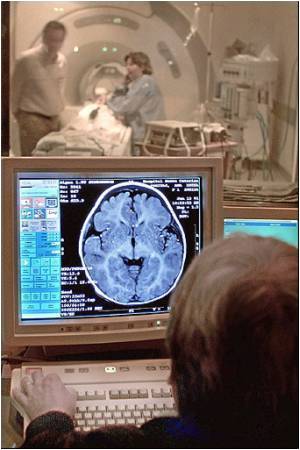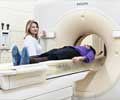
The results of this study were published online today in the Archives of Pediatrics and Adolescent Medicine.
Despite widespread discussions about the health hazards of environmental exposures in children, radiation exposure from the frequent use of imaging procedures has received less attention, possibly due to limited contemporary data in younger patients. As such, this study identified 355,088 children under the age of 18 in five large U.S. health care markets to track how often these imaging procedures are used. The study found that over 400,000 imaging procedures were performed in just 3 years, with 42.5% of the children receiving at least one of these procedures and many undergoing multiple tests. The types of tests the investigators considered included everything from routine x-rays that use very low doses of radiation to more advanced tests, like CT scans, that require doses that are greater. Based on these data, the average child in this study population would be expected to receive approximately 7 imaging procedures utilizing radiation by age 18.
By necessity, the study focused on the numbers and types of procedures that were performed, and did not calculate specific doses of radiation that were received by each child. Data to perform such calculations are limited in children and are part of ongoing work by the team.
"What we''ve tried to do is raise awareness of the issue and start a national dialogue by identifying the overall scope of the problem," Dorfman says." One limitation of this type of analysis is that the clinical appropriateness of the tests could not be determined, he adds.
"The next step is to better understand when these tests really add value to the care of a child and when they do not," Dorfman says.
Advertisement
"Developing tissues in children are more sensitive to radiation and their longer expected life spans also allows additional time for the emergence of detrimental effects," says co-author, Reza Fazel, M.D., M.Sc., a cardiologist at the Emory School of Medicine. Fazel cautions that for any individual child undergoing a single test the risk is typically low.
Advertisement
Investigators note that each imaging procedure should be guided by the principle of ALARA, or As Low As Reasonably Achievable, which advocates for minimizing radiation doses while still obtaining sufficient clinical information.
Applegate, a member of the international Image Gently Campaign, is working with a coalition of health care organizations to raise awareness of the need to adjust radiation doses when imaging children. The Image Gently campaign promotes optimal scanning strategies to lower radiation exposure in children.
Andrew J. Einstein, M.D., Ph.D., a cardiologist at Columbia University and another coauthor, says this study should not deter parents from imaging procedures that may provide clear benefit for their children. "It should encourage discussions about the value of each imaging test that is ordered, recognizing that radiation exposure, even in small amounts, may not be risk free."
Additional authors include Harlan M. Krumholz, M.D, S.M., Yale University School of Medicine; Yongfei Wang, M.S., Yale University School of Medicine; Emmanuel Christodoulou, Ph.D., University of Michigan Medical School; Jersey Chen, M.D., M.P.H., Yale University School of Medicine; Ramon Sanchez, M.D., University of Michigan Medical School; Brahmajee K. Nallamothu, M.D., M.P.H., University of Michigan Medical School
Funding: Dr. Einstein was supported by K12 institutional career development award KL2 RR024157 from the National Institutes of Health, by the Louis V. Gerstner Jr Scholars program, and by the Lewis Katz Cardiovascular Research Prize for a Young Investigator. Dr. Chen was supported in part by American Heart Association Clinical Research Program Award 10CRP2640075 and Agency for Healthcare Research and Quality Career Development Award 1K08HS018781-01.
Disclosure: Dr. Einstein has served as a consultant for the International Atomic Energy Agency and for GE Healthcare, has received support for other research from Spectrum Dynamics and a Nuclear Cardiology Foundation grant funded by Covidien, and has received travel funding from GE Healthcare, INVIA, Philips Medical Systems, and Toshiba America Medical Systems. Dr. Applegate has a textbook contract for Evidence-Based Imaging in Pediatrics with Springer. Dr. Krumholz is the chairman of a scientific advisory board for UnitedHealthcare.
Additional Resources:
Image Gently Campaign is an initiative of the Alliance for Radiation Safety in Pediatric Imaging. The campaign goal is to change practice by increasing awareness of the opportunities to lower radiation dose in the imaging of children. More information at: www.imagegently.org
Written by Margarita B. Wagerson
Source-Newswise










